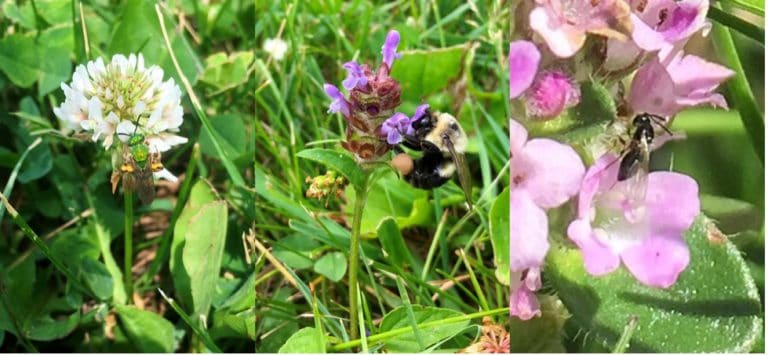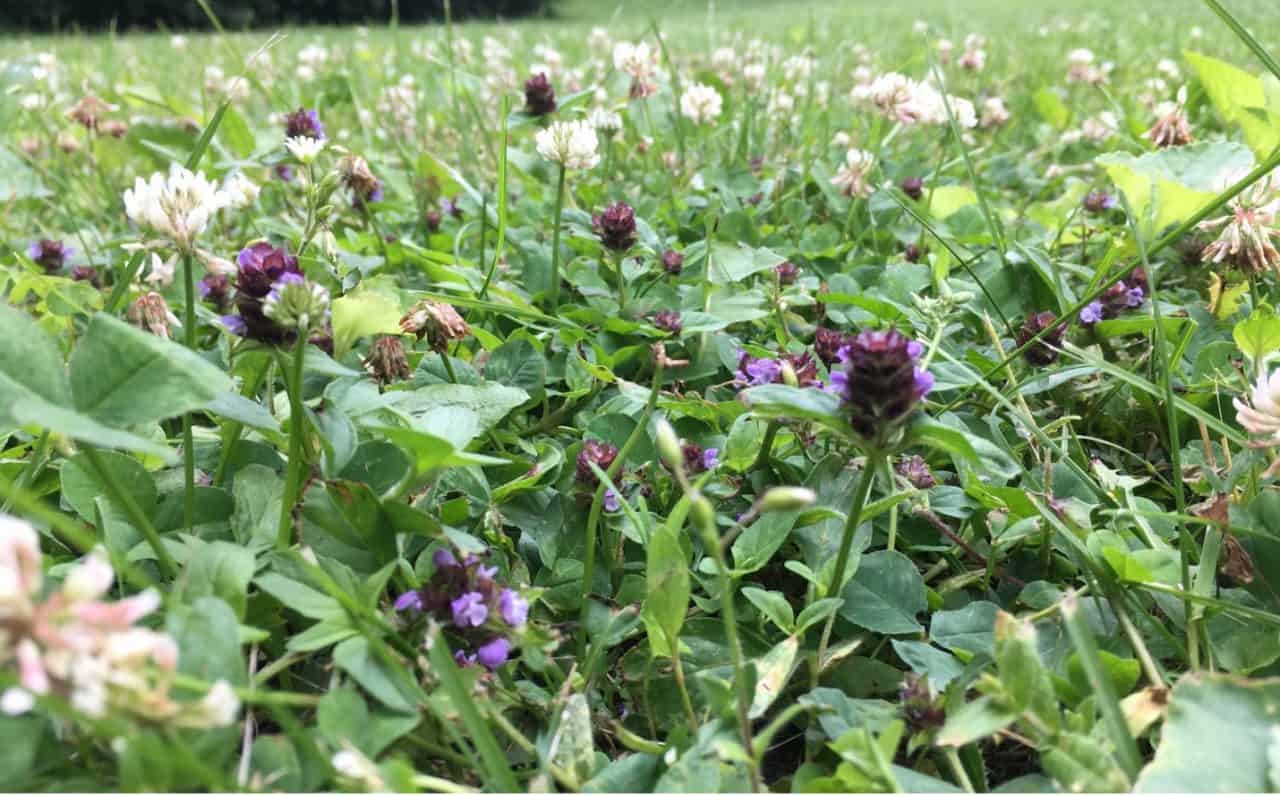Guest Blog Written By James Wolfin
The turfgrass lawn has become a staple of American culture. To many, the desired lawn is a lush, green carpet that is cut low and weed free; maintained to draw the admiration of neighbors. We often go to great lengths to curate this aesthetic. Weekly mowing. Weekly watering. Herbicide applications to keep out undesirable weeds. Spreading fertilizer a few times per year to ensure the pristine green color that has become an expectation in some communities. But have we stopped to consider the ecological and environmental consequences of how we manage our lawns, and what alternatives there may be?
Common lawn maintenance practices like mowing, watering, and the application of fertilizers and herbicides are collectively referred to as lawn inputs. These lawn inputs are environmentally costly. They produce significant emissions of carbon dioxide on an annual basis which contributes to climate change. In 2018 alone Americans used nearly 3 billion gallons of gasoline to operate lawn and garden equipment. And on top of this, stormwater runoff from turfgrass lawns can carry nitrogen and phosphorus from fertilizers as well as potentially harmful chemicals from herbicides into nearby bodies of water, diminishing local water quality. The impacts of lawn care are also felt in our wallet, as Americans spent $105 billion dollars on lawn maintenance in 2020.
Supporting pollinators in your lawn
Taking measures to reduce lawn inputs is already becoming increasingly popular in the United States. Residents are starting to use low input turfgrass species like fine fescue and tall fescue grasses. Turfgrass science programs are starting to breed for traits associated with resilience like drought tolerance (less watering) and a slow rate of growth (less mowing). What’s more novel is the idea of using the lawn as a conservation tool to support wildlife, including bees and pollinators. Renowned ecologist Douglas Tallamy has referred to lawns as an “ecological dead zone”. But it is possible that a cultural shift could allow us to convert an ecological dead zone into a landscape that provides food and habitat for pollinators. Instead of viewing lawn flowers as weeds, lawns can be managed to intentionally include low-growing flowers that provide high-quality nutrition to our pollinators.
Researchers from the University of Minnesota have developed a “Bee Lawn Mix” that incorporates three flowers, Dutch white clover (Trifolium repens), Self-heal (Prunella vulgaris), and Creeping thyme (Thymus serpyllum) alongside low-input fine fescue grass seed. Each of these flowers bloom at 3” or less and can withstand the mowing and foot traffic associated with traditional lawn use. These flowers have been shown to provide food for more than 60 species of bees in Minneapolis. The seed mix has even been included as an approved planting type in Minnesota’s Lawns to Legumes project – a statewide program that aims to help residents convert their traditional turfgrass lawns into pollinator habitat to conserve the endangered Rusty Patched Bumble Bee and other at-risk pollinators.

While bee lawns have already gained significant popularity in Minnesota, the bee lawn mix can be used anywhere cool-season grasses grow. They can be installed via overseeding, where the seed mix is spread over the top of a pre-existing stand of turf, or as part of a new lawn renovation. An overseeding is best-suited for a healthy (relatively weed-free) lawn planted with either Kentucky bluegrass or fine fescue grass. The bee lawn flowers will struggle to establish alongside other grass species and aggressive weeds. If these conditions are not present in a lawn, a bee lawn can also be established by removing the old turf and seeding a bee lawn directly into the soil. The steps to establishing a bee lawn are very similar to those of establishing a traditional turfgrass lawn. A light and frequent watering schedule is recommended for the first 30 days. Once a bee lawn is fully established, additional irrigation is only needed during periods of drought. More information on bee lawn installation and maintenance can be found in the Bee Lawn Toolkit on the University of Minnesota bee lab website, or this guideline from the University of Minnesota turfgrass science lab.
The time is now to reimagine the role lawns play in our society. Rather than managing lawns as a monoculture, a simple green carpet, the turfgrass lawn can function as part of a resilient landscape that promotes the conservation of pollinators and natural resources. For those that worry “what will the neighbors think?” a survey conducted by University of Minnesota researchers found that more than 95% of those surveyed supported the planting of bee lawns at Minneapolis parks. Plant a bee lawn and become a part of the lawn revolution!
We hope that planting a bee lawn can be an exciting “first step” in one’s journey to reimagine how landscapes are designed and managed. If you are looking to convert larger swathes of land to pollinator habitat there are programs in place to assist these efforts. The Bee and Butterfly Habitat Fund and the Seeds for Bees program (operated through Project Apis m.) aim to help growers, beekeepers, and other concerned individuals install pollinator habitat by providing research-driven seed mixes free of charge. Whether you choose to plant a 100 square foot bee lawn, or a 1000-acre pollinator meadow, your efforts will go a long way in shaping the future of habitat management.
Our guest blogger, James Wolfin with Twin City Seeds, is not affiliated with the Bee Informed Partnership (BIP) and BIP does not benefit from any support from this business. The views and opinions expressed in this article are those of the author and do not necessarily reflect the official position of BIP.
